Music Streaming Services: Apple Music Vs Google Play Music Vs Spotify
The way we access music has changed. A few decades ago, having a large audio collection meant you needed considerable storage space and not the kind you measure in GBs. You needed square feet or square inches to store cassettes and records. Music has since been digitized. Your music exists in small files that you can store on affordable disks with room to spare. Where you buy music, and how it’s distributed has changed. Online subscription services now give you access to thousands of tracks and it’s a very competitive space. Three of the biggest services operating in this niche are Apple Music, Google Music, and Spotify. Here’s a comparative look at all three services to help determine which is the best.
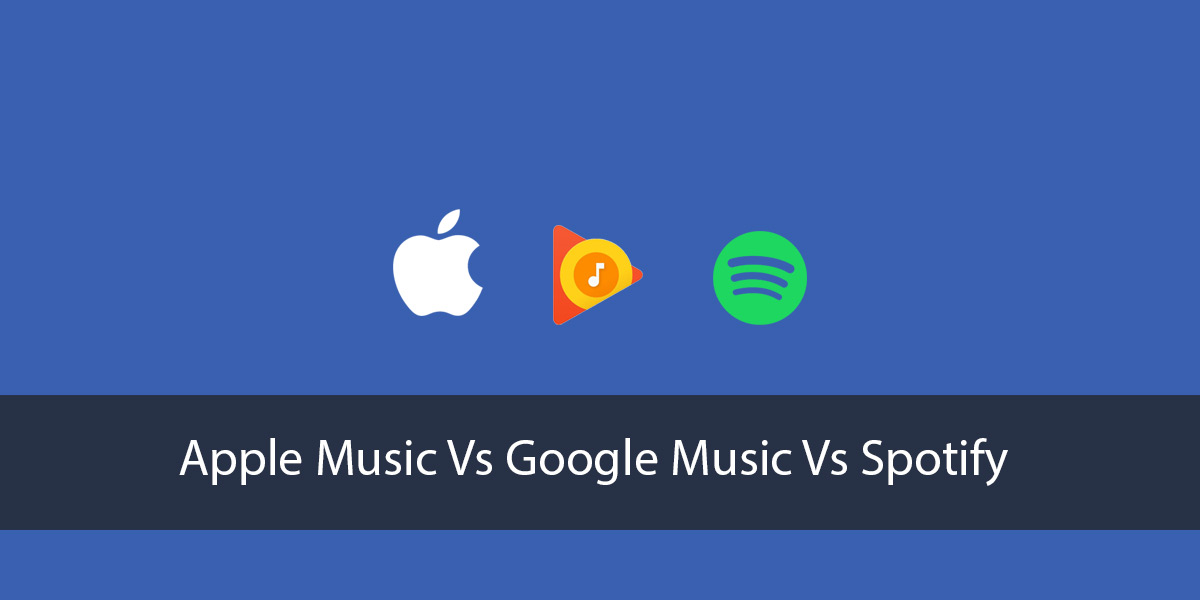
ACCESS TO MUSIC
Music subscription services and video streaming services have one thing in common; licensing agreements. These agreements decide which countries music can be licensed to. As such, they apply geographical restrictions that music streaming services have to comply with to avoid a lawsuit.
Cost
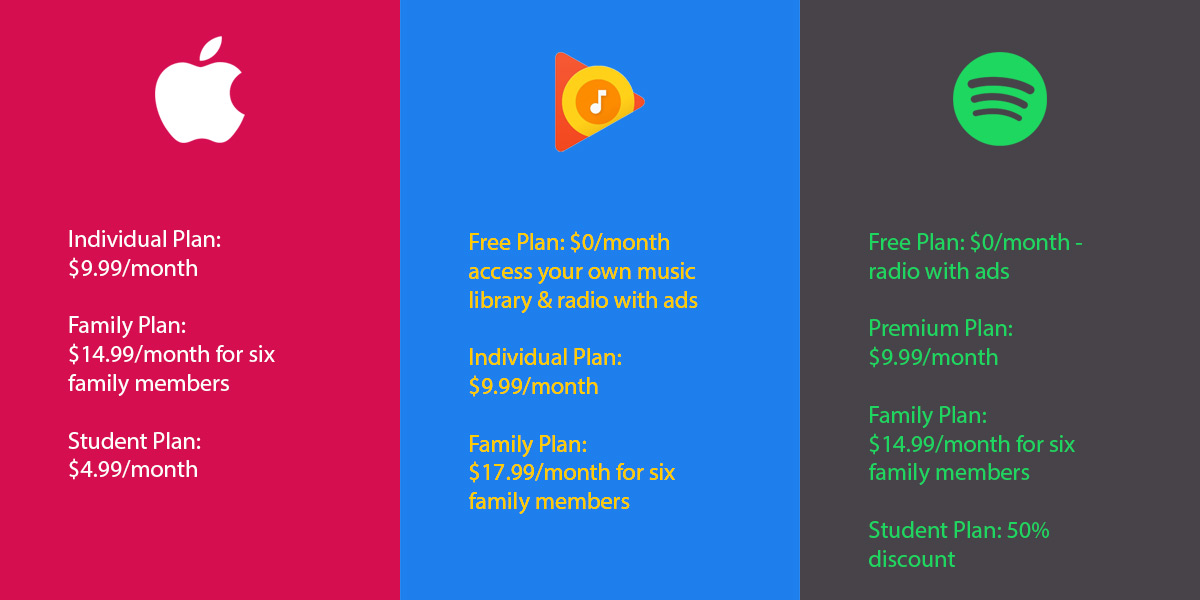
Apple Music has a three month free trial period. After that, you can upgrade to one of three plans.
- Individual Plan: $9.99/month which gives you the full Apple Music experience
- Family Plan: $14.99/month for six family members
- Student Plan: $4.99/month but you have to be able to prove you’re a student
Google Music isn’t just a music streaming service. It’s also a music library. If you already have a large music library, you can upload it to Google Music and listen to it anywhere for free. For access to music outside your library, you have to subscribe to the service. There are two plans available;
- Free Plan: $0/month to access your own music library, and listen to the radio with ads.
- Individual Plan: $9.99/month for access to the entire Google Music library
- Family Plan: $17.99/month for six family members to access the full Google Music Library
Spotify has a free plan and a premium subscription.
- Free Plan: $0/month to access songs and listen to the radio with ads
- Premium Plan: $9.99/month
- Family Plan: $14.99/month for six family members
- Student Plan: 50% discount on the premium plan
Winner: The paid subscriptions for all three services cost the same. Spotify and Google Music have a free plan while Apple Music doesn’t. Google Music’s free plan and Spotify’s free plan are both on-par with each other in terms of cost so it’s a tie between the two.
Geographical Limitations
As stated earlier, music streaming services are limited by region. You may be able to afford a streaming service, and you might love the music selection a service has to offer but you can’t buy a subscription if the service isn’t available in your country. You can use a VPN to access the services that have free a version which, in this case, is Spotify.
All three services, Apple Music, Google Music, and Spotify have geographical restrictions.
Apple Music is available in 115 countries.
Google Music is available in 63 countries.
Spotify is available in 60 countries.
Winner: Apple Music is available in more countries.
GETTING CONTENT
Content-wise, none of these three services are lacking. Apple Music did have a brief disagreement with Taylor Swift and she withheld her music from them for a while but the matter was resolved.
New Music
Apple Music and Spotify get the latest music but Apple Music does enforce an Apple Exclusive deal with some labels. This restricts the music so that other streaming services won’t get it for quite a while. Spotify has something similar in place while Google Play doesn’t.
If we’re being real, unless it’s a very popular song, you won’t miss anything. Of course, Google Music is the one that’s going to be left out. Between Apple Music and Spotify making content exclusive, Google Music will get it after everyone else does.
Sound Quality
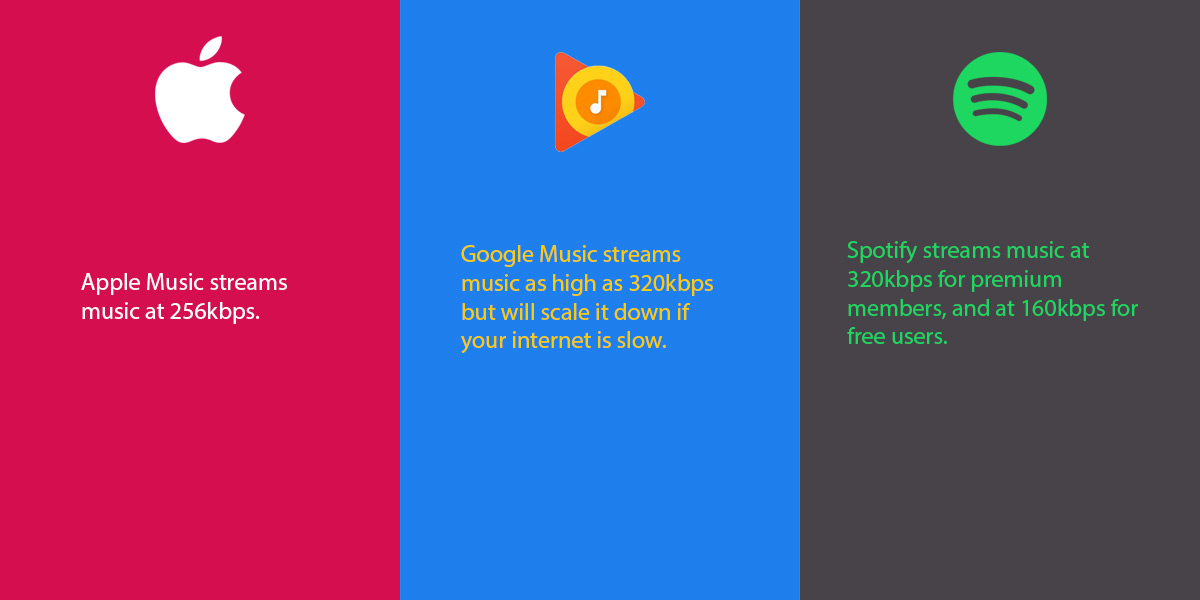
Sound quality in the digital age is measured in bit-rates. The higher the bit-rate, the better the sound quality.
Apple Music streams music at 256kbps.
Spotify streams music at 320kbps for premium members, and at 160kbps for free users.
Google Music streams music as high as 320kbps but will scale it down if your internet is slow.
Winner: Spotify is the clear winner here with a bit-rate of 320kbps for its premium users.
APPS & APIs
Official Apps
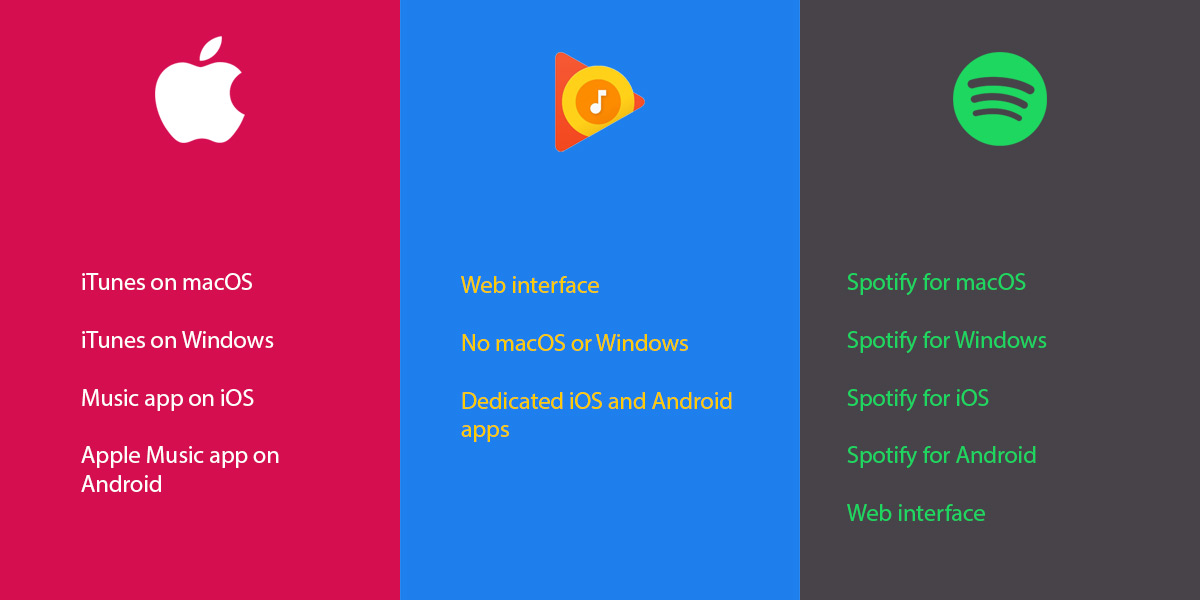
Apple Music: Apple Music works via iTunes on macOS and Windows. On iOS, it works via the Music app. On Android, there is a dedicated Apple Music app. Apple Music doesn’t have a web interface.
Google Music: Google Music doesn’t have an official desktop app. It works in your web browser. It has dedicated apps for both iOS and Android.
Spotify: Spotify has dedicated apps for macOS, Windows, iOS, and Android. It also has a web interface that you can use.
Winner: Spotify is the clear winner here.
Third-Party Apps
In order for developers to make apps for either one of these services, their API must be open. Apple Music, Google Music, and Spotify all have open APIs that allow developers to create their own apps.
Third-party Apple Music apps are developed for iOS. Both desktop users and Android users have little to no alternatives to the official apps.
Third-party Google Music apps are rare. The few that function on an Android device require root access. There is neat open-source Google Music desktop player app available for macOS, Windows, and Linux. It’s a great app but there isn’t much else available besides this.
Spotify rules when it comes to third-party apps. There are a number of desktop apps available for macOS as well as for other platforms. Additionally, apps are developed as add-ons for the official Spotify app. If you’re unhappy with the official app, you’re spoiled for choice.
Winner: Spotify by a mile.
SUGGESTIONS & DISCOVERY
Music suggestions and discovery depend on two things; how well a service learns your taste in music, and how often it finds new music for you that you actually like. There’s no way to quantify how often any service finds good music for its users. What we can examine is how a service learns what you like.
Apple Music: When you first sign up for Apple Music, it asks you to select your favorite genres. You give it a sense of the kind of music you like and this helps the service eliminate genres that don’t interest you. After that, Apple Music learns your taste. You can favorite songs to help it further understand your taste.
All this culminates into a ‘For You’ section that features suggested music you might like. You get a fresh list everyday so you’re never going to be starved for new stuff. Whether or not it’s accurate is going to depend on your own personal experience.
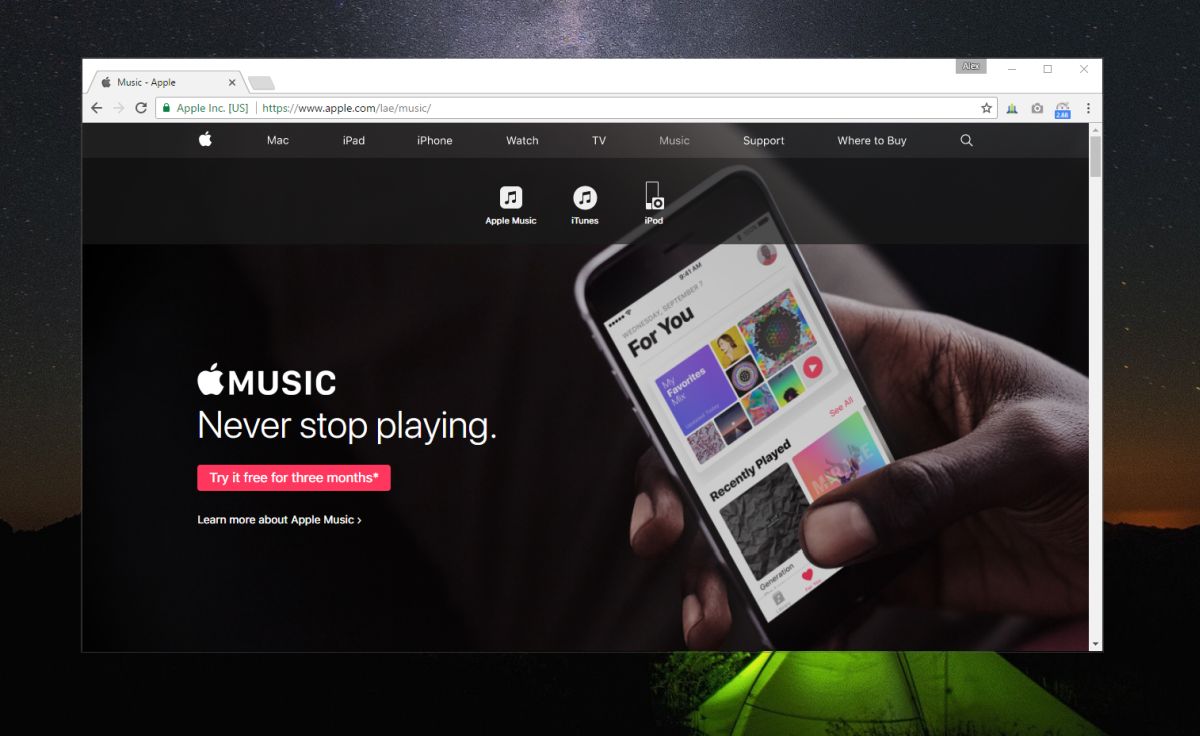
Google Music: Google Music asks you to select your favorite genres when you sign up. This is a very standard approach to learning your music tastes. It also examines the songs in your library. Google Music’s radio stations offer reasonably good suggestions though the best ones are in the ‘I’m feeling lucky’ station.
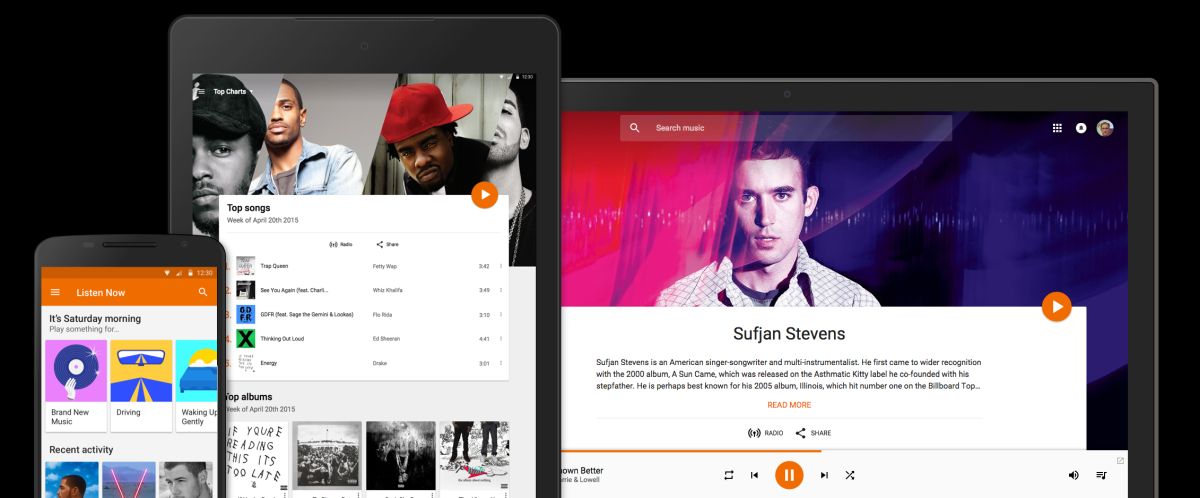
Spotify: Spotify suggests music in two different ways. It has playlists that show you trending music around the world. If you don’t like what’s trending, the weekly discover playlist is another option. This playlist is built around your own tastes instead of what is popular. You will likely find great suggestions in this particular playlist.
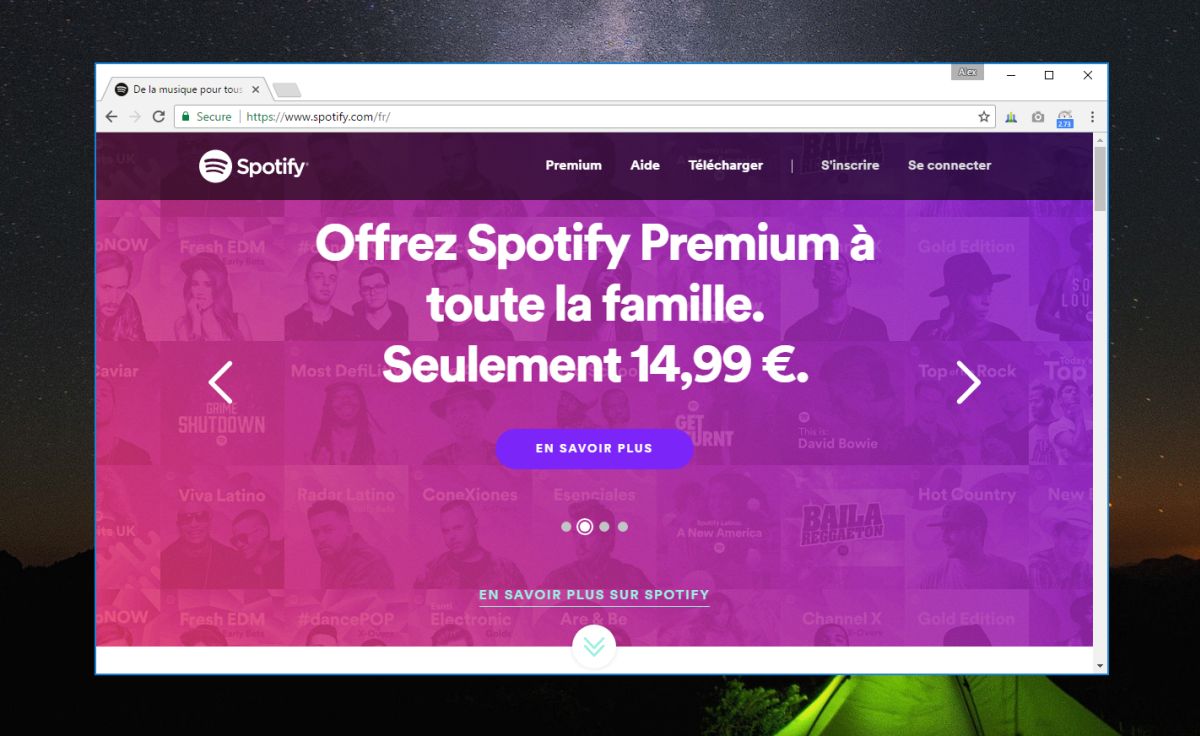
Final Winner:
Spotify comes out on top. Cost-wise, these services don’t have any edge over the other. Apple Music actually misses out on audio quality to Spotify and Google Music seems like a work-in-progress compared to the other two. Spotify may not have a large name like Apple or Google behind it but it is a major competitor for these giants, and for good reason.

Thank you for this Informative article see here android Music app Spotify MOD APK 2022
IF you ever decide to try and transfer your music library from one library to another try using musconv – bangelica
NOTE: Google Music is $14.99/month for a Family Plan for six family members, not $17.99/month as the author states above.
Having subscribed to both Google and Spotify, they are basically interchangeable, can’t go wrong with either. For me, YouTube Red access and the ability to upload my own music collection (up to 50,000 songs) is what tipped the table to Google.
Would have been good to include what each service pays the artist. Something I looked into so I could be more intentional about supporting the artists I’m listening to whilst streaming. Whilst it ticks a lot of boxes, from what I could find in some research, was that Spotify comes way down on the list of who pays the artist the most. Just because it’s one of the more popular services, doesn’t mean it’s best for everyone.
Pretty ridiculous to only go by bit rate and not the algorithms used. Spotify uses Ogg and Apple uses AAC and pretty much every review says 256k AAC is as good or better than 320k Ogg.
Tidal and Pandora aren’t mentioned at all.
Pandora is available in 3! countries. Dat market share compared to those 3. OP should take it to count! /s
i stopped reading this after reading higher bps meant better sound quality..
“Apple Music actually misses out on audio quality to Spotify”